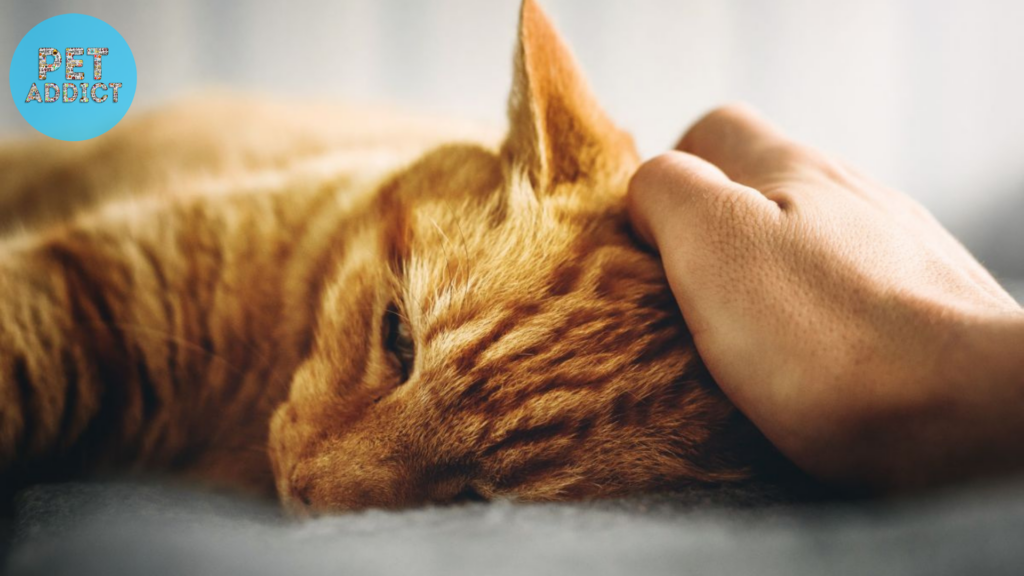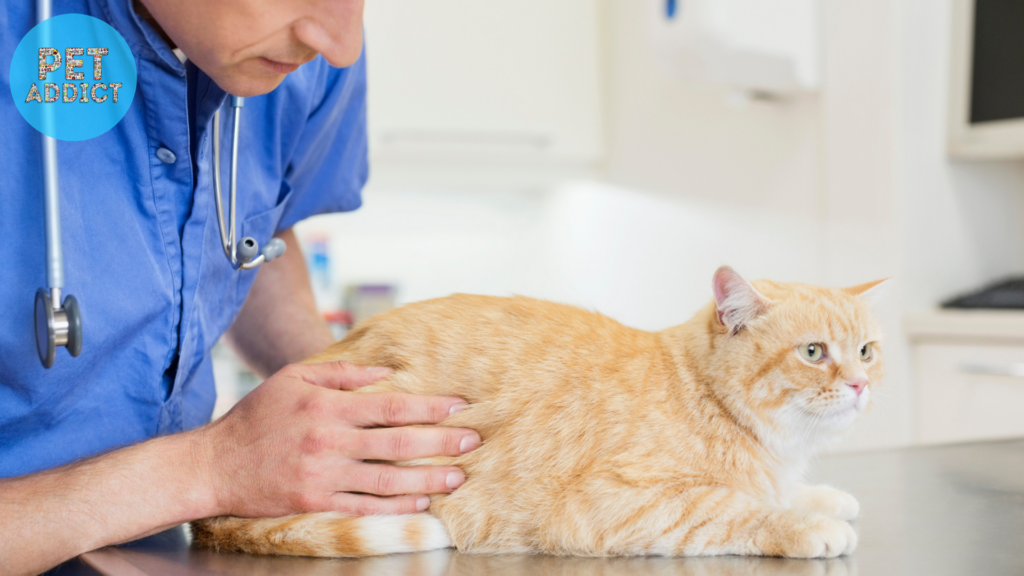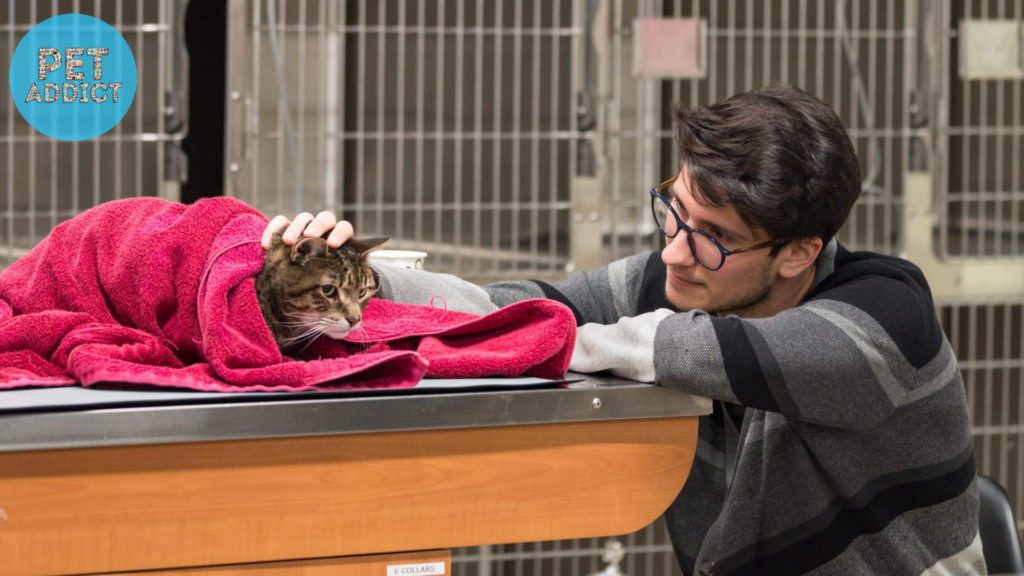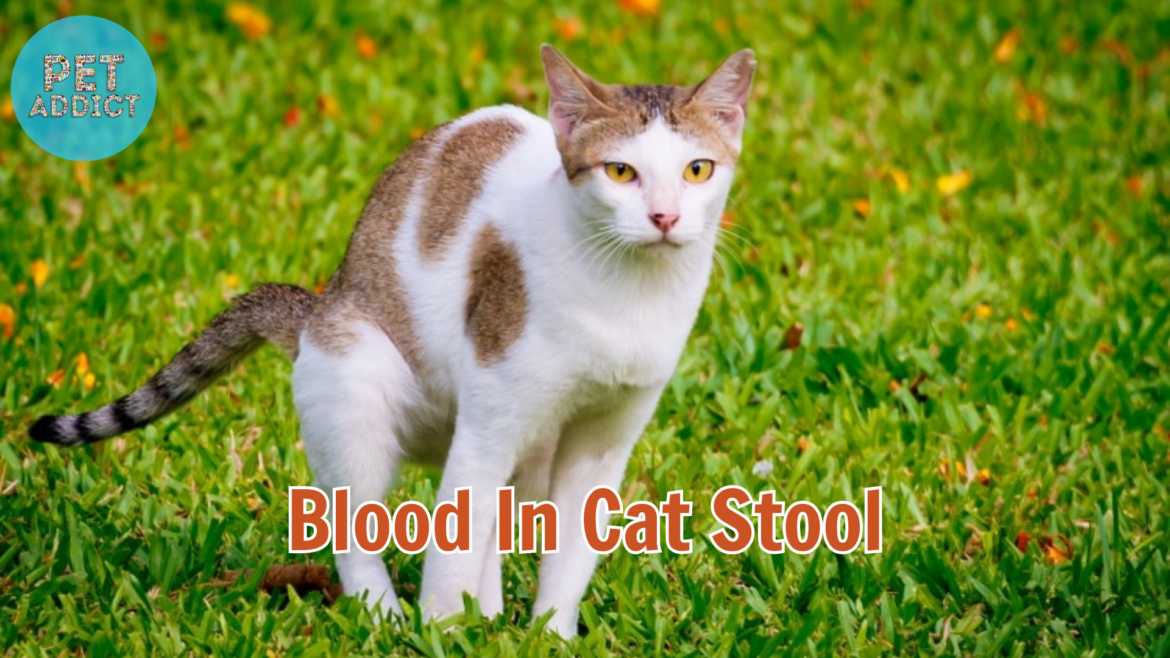Discovering blood in your cat’s stool can be a distressing experience for any pet owner. It’s important to approach this situation with a calm and informed perspective. Blood in cat stool, known as hematochezia, can have various underlying causes, ranging from minor issues to more serious health concerns. In this article, we’ll delve into the potential reasons behind blood in cat stool and provide guidance on how to deal with it.
PetAddict.net – The best place where you can find everything about your pet!
Causes of Blood in Cat Stool

Dietary Changes
Abrupt dietary changes or the introduction of new foods can irritate a cat’s digestive system, leading to inflammation and blood in the stool.
Parasites
Internal parasites such as worms or protozoa can cause irritation and bleeding in the gastrointestinal tract, resulting in the presence of blood in the stool.
Inflammatory Bowel Disease (IBD)
IBD is a chronic condition that causes inflammation of the digestive tract. Blood in the stool can be a symptom of this condition.
Constipation
Hard stools can cause tiny tears in the rectal area, leading to blood in the stool. Straining to pass stool can exacerbate this issue.
Anal Gland Issues
Impacted or infected anal glands can cause discomfort and bleeding when a cat defecates.
When to Seek Veterinary Care

Mild Cases
If you notice a small amount of blood in your cat’s stool and your cat is otherwise acting normal, you can monitor them closely. However, it’s still recommended to consult a veterinarian to rule out serious issues.
Urgent Cases
If your cat’s stool is primarily composed of blood, if they appear lethargic, have vomiting, or show signs of pain, seek immediate veterinary attention.
How to Deal with Blood in Cat Stool

Veterinary Examination
Consulting a veterinarian is crucial to determine the underlying cause of the blood in the stool. A thorough physical examination and potentially additional tests will help diagnose the issue.
Follow Treatment Recommendations
Treatment will depend on the cause of the blood in the stool. This might involve dietary changes, deworming, medication, or managing underlying conditions like IBD.
Monitor Hydration
Ensure your cat stays hydrated. If they show signs of dehydration, such as sunken eyes or lethargy, contact your veterinarian.
Preventive Measures
Maintain a consistent diet for your cat and avoid sudden dietary changes. Regular deworming and parasite prevention are also important for their overall health.
Conclusion
Discovering blood in your cat’s stool is a cause for concern, but it’s important not to panic. Understanding the potential causes and taking appropriate action can lead to effective management and treatment. By seeking veterinary care, following treatment recommendations, and providing proper care for your cat’s overall well-being, you can address the issue and ensure your feline friend’s health and happiness.




